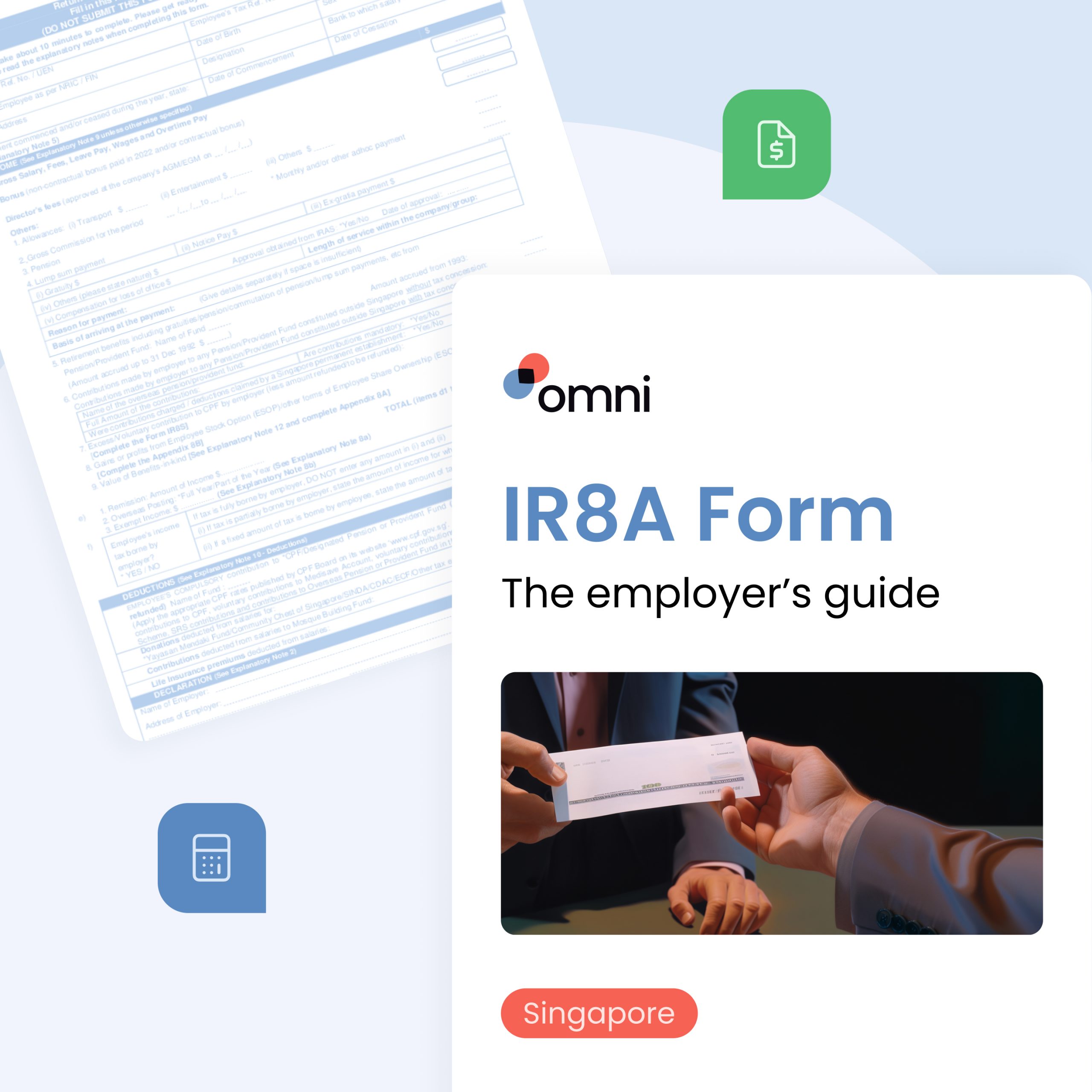- The Importance of Remote Work Feedback
- The Remote Challenges of How to Write a Performance Review
- Preparing for Remote Performance Reviews
- Tips on How to Write a Performance Review for Remote Employees
- How to Run Performance Reviews Remotely
- Tools for Effective Remote Performance Management
- Leveraging Technology for Remote Performance Assessments
Performance management is a crucial part of employee development but it can be a delicate and daunting process. Performance reviews help managers identify employee strengths and weaknesses while providing feedback on progress and areas for improvement. Hence, knowing how to write a performance review is extremely important. By turning it into a formula based on objective criteria, you can make the entire process much more transparent and approachable for employees and achieve successful outcomes.
While traditional performance reviews tend to be difficult to begin with, being in a remote environment can cause further confusion and miscommunication. It may be likely that casual 1-on-1 check-ins are less frequent due to location restrictions and time zone differences, resulting in reduced real-time feedback given to remote employees.
Aside from that, managers are also struggling to adapt to the new way of working, as a recent survey found that only one in six managers have updated their performance review strategy to account for remote and hybrid work models. In this article, we will be exploring how to write a performance review for remote employees that maximizes the value of this traditional piece of formal feedback.
The Importance of Remote Work Feedback
In the era of remote work, where physical distances separate entire teams, providing actionable feedback becomes more important than ever. Remote work feedback helps guide your employees and teams toward success by encouraging a culture of continuous improvement.
Unlike in traditional office settings, where casual interactions might offer immediate insights into performance, remote work demands a more deliberate approach. Knowing how to evaluate remote employees effectively without the day-to-day exchanges means you will likely need to rely on more formal feedback. Knowing how to write a performance review equips managers and employees with the tools they need to shape performance and provide guidance to improve the outcomes of their teams
The Remote Challenges of How to Write a Performance Review
Remote work, while offering unprecedented flexibility, introduces distinct challenges that impact the performance review process. Understanding the ins-and-outs of these issues is necessary for creating a feedback culture tailored to the realities of virtual work.

Communication barriers: In remote settings, reliance on digital communication tools can sometimes create barriers. Misinterpretation of written messages and the absence of non-verbal cues can lead to communication challenges, affecting the clarity and nuance of feedback. This is a key part of knowing how to write a performance review for remote employees—you will need to consider all angles the written feedback could be interpreted and try to be as clear and objective as possible.
Learn More:
Fostering a positive remote feedback culture: Building a positive feedback culture is important in all work settings, even more so for remote work environments. Managers need to actively encourage open communication, acknowledging achievements, and creating an atmosphere where constructive feedback is seen as an opportunity for growth rather than criticism.
Balancing objectivity and empathy: Striking the right balance between objectivity and empathy is crucial, especially when handling tough conversations at work. While objective metrics are essential for performance evaluation, recognizing the unique challenges individuals might face in a remote setup is equally important. This balance ensures fairness and understanding in the assessment process.
Lack of visibility: One of the primary challenges of how to write a performance review for remote employees is the limited visibility into employees’ daily work. You will need to devise strategies to gain insights into your team’s activities without resorting to micromanagement, ensuring a fair and accurate evaluation. Clear objectives and key results (OKRs) and regular virtual check-ins go a long way, but ultimately an element of trust will always be necessary.
Low engagement: Remote work can sometimes lead to lower engagement levels, making it challenging to encourage proactive goal setting and development discussions. Overcoming this requires intentional efforts to keep employees motivated, aligned with organizational goals, and being invested in their professional development. One aspect of how to write a performance review for remote employees is framing feedback in a way that drives employee interest and gives them opportunities and skill sets to grow in their career—all of which are key drivers of engagement.
Preparing for Remote Performance Reviews
Part of knowing how to write a performance review is understanding that the groundwork starts well before you begin your evaluation. Clear goals, consistent feedback, and smaller evaluations should be an ongoing strategy to assess your remote workforce.
For Managers
Set clear goals: Clarity is key in a remote work environment where team members often work independently rather than in an office setting. Ensure that the business objectives are clearly communicated to the team, and they are aware of what the business is working towards and hoping to achieve.
Additional tools:
Flexibility and adaptability: For remote performance assessments, managers must embody flexibility and adaptability. Recognizing the unique challenges that remote work presents, you need to be open to alternative work arrangements and adjust expectations based on individual circumstances. This approach fosters a supportive environment, contributing to improved performance and job satisfaction among remote team members.
Consistent communication and feedback: Managers should prioritize consistent communication and feedback to ensure a dynamic and ongoing connection with their remote teams. Regular check-ins, progress updates, and feedback sessions create a continuous feedback loop and solve many of the challenges of how to write a performance review. Consistent communication not only avoids surprises during formal reviews but also enables real-time adjustments and improvements, promoting a culture of continuous growth.
For Employees
Proactive communication: Employees play a pivotal role in the success of remote performance assessments. Being proactive in communicating challenges, suggesting solutions, and actively participating in goal-setting discussions is crucial. This proactive approach demonstrates engagement and a commitment to success, allowing employees to take an active role in shaping their performance evaluations. Having a clear understanding of the wins and areas of improvement bring a lot of clarity when questions of how to write a performance review come up.
Adaptability to changing circumstances: In a remote work setup, adaptability is a key trait for employees. Being open to changing circumstances, whether it is in work processes, goals, or communication methods, showcases resilience. It also indicates a readiness to embrace new ways of working, contributing to personal and professional development.
Commit to honest self-evaluation: Employees are encouraged to perform a self-evaluation prior to the performance review. This allows employees to reflect on their achievements, challenges faced, and areas of improvement. This proactive approach allows your employees to offer personal insights into their performances, which makes the performance review for remote employees an open and collaborative process.
Tips on How to Write a Performance Review for Remote Employees

Once you have laid the groundwork, it is time to explore how to write a performance review. Here are some tips for managers and employees to make the process as easy and effective as possible:
For Managers
Apply objective metrics: Set objective, ambitious yet attainable and clear key performance indicators for evaluations. Remote work often requires high focus on deliverables and outcomes. Using quantifiable measures reduces ambiguity and subjectivity, fostering fair evaluations. These objective metrics simplify the ambiguity that can come with questions of how to write a performance review.
Recognize adaptability: Acknowledge and appreciate adaptability. Remote work demands a certain level of flexibility and the ability to navigate changing circumstances. Recognizing employees who demonstrate adaptability contributes to a positive and motivating review.
Build feedback and development plans: Offer constructive feedback and discuss development plans. Performance reviews are not just about evaluating past performance but also about setting the stage for future growth. Discussing strengths, areas for improvement, and outline plans for skill development is a major part of how to write a performance review.
Learn more:
For Employees
Align your goals: When considering how to write a performance review, ensure your goals align and ladder up to higher-level organizational goals. Clearly articulate how your individual contributions have furthered the company’s objectives. This connection between individual efforts and overarching goals demonstrates that your contribution is done with the intent of having a broader benefit.
Be open with your communication: Maintain open lines of communication with your manager. Discuss expectations, seek clarification when needed, and actively participate in goal-setting discussions. Proactive communication ensures that both parties are on the same page.
Consider your professional development: Express a commitment to professional development. Discuss aspirations, career goals, and areas for skill enhancement. A forward-looking approach signals a proactive stance towards personal and professional growth.
How to Run Performance Reviews Remotely
Now that we have explored how to write a performance review for remote employees, let us take a look at delivering that feedback. Effective remote evaluations require thoughtful planning and the right approach. Here is what you need to know about evaluating remote employees:
1. The right place, at the right time
Select a reliable and secure video conferencing platform for the meeting. Ensure that both you and your employee are comfortable with the technology used (relevant apps installed, updated, etc.) to minimize disruptions, which could make the process feel less natural and difficult.
Once you have the platform sorted out, choose a meeting time that suits both schedules, and be sure to allocate sufficient time for the performance review. Remote reviews might require more in-depth discussions, and rushing through the process can hinder its effectiveness, so make sure that both you and your employee have ample bandwidth for the performance review.
2. Set the stage before the review starts
Before the actual meeting, managers should communicate clearly on how the remote review will be carried out. This includes providing the agenda, topics to be covered, and any preparation needed prior from your employee. By doing so, employees have the chance to gather the necessary materials and it also takes away any element of surprise that could impact the review process negatively.
You should also encourage or request employees to submit self-evaluations and other relevant documentation before the review. This allows both parties to be well-prepared and ensures a comprehensive and effective discussion.
3. Clear communication is key
Engage in two-way communication—make the review a dialogue rather than a monologue and encourage employees to share their perspectives, concerns, and aspirations. This creates a collaborative environment, and develops mutual understanding and greatly compliments the process of how to write a performance review.
While doing this, acknowledge achievements and discuss challenges openly. Recognizing accomplishments boosts morale, while addressing challenges constructively contributes to continuous improvement. Remember to constantly check on any potential internal biases as you perform these reviews to ensure each team member is receiving fair and objective feedback.
During this discussion, set goals for the upcoming period with your team in a collaborative manner. Discuss career goals, skill development, and how these align with the company’s objective, and clearly outline expectations and metrics for success.
4. Consider the next steps
After the evaluation is complete, outline relevant follow-up actions and timelines. This includes any additional support needed, training opportunities, or adjustments to responsibilities. A clear plan post-review is essential to ensure follow-through on feedback.
Omni Tip:
Document the key points discussed during the review. This documentation can serve as a reference for future evaluations and clears up many questions that arise around how to write a performance review. Documentation also serves as a great tool in tracking progress against goals.
Tools for Effective Remote Performance Management
Knowing how to write a performance review in a remote setting requires the right tools to facilitate communication, collaboration, and evaluation. Here are some essential tools that you can consider for remote performance management:
Project management platforms
Examples: Asana, Trello, Jira
Use project management tools to set goals, track progress, and ensure alignment with overall business objectives. These platforms enhance transparency and accountability.
Communication and collaboration tools
Examples: Slack, Microsoft Teams, Zoom
Seamless communication is the most important element for remote teams. Use messaging, video conferencing, and collaboration tools to facilitate regular interaction and maintain a sense of connection.
Performance tracking software
Examples: 15Five, Lattice, Small Improvements
Dedicated performance tracking tools allow for continuous feedback, goal setting, and progress monitoring. They facilitate regular check-ins and enable employees to track their achievements.
Employee recognition platforms
Examples: Bonusly, Kazoo, Achievers
Recognizing and rewarding remote employees is crucial for maintaining engagement and morale. Employee recognition platforms provide a structured way to acknowledge achievements, fostering a positive remote work culture.
Feedback and survey tools
Examples: SurveyMonkey, Culture Amp, Officevibe
Collecting feedback from your employees on their work experience, challenges, and suggestions is important to improve and offer support. These tools help in understanding your remote workforce’s sentiments.
Learning and development platforms
Examples: LinkedIn Learning, Udemy for Business, Coursera for Business
Remote performance management should include opportunities for skill development. Learning platforms offer a variety of courses to support professional growth.
HRIS (Human Resources Information System)
Example: Omni
An HRIS streamlines HR processes, including performance management. It centralizes employee data, simplifies administrative tasks, and provides insights for strategic decision-making. All-in-one solutions like Omni combine many of the features from performance management tools and learning platforms to simplify the performance review process. With integration across your favorite tools like Google calendar and Lattice’s performance management platform, Omni makes it easy to schedule, track, and send reminders to bring ease to your review process.
Virtual whiteboards and collaboration apps
Examples: Miro, MURAL, Microsoft Whiteboard
Encourage creativity and collaboration in remote teams using virtual whiteboards. These tools are excellent for brainstorming sessions, ideation, and collaborative planning.
Leveraging Technology for Remote Performance Assessments
Conducting performance reviews in a remote work setting does not have to be daunting, knowing how to write a performance review arms you and your team with the knowledge to create impactful learning opportunities that drive business outcomes. By employing a well-structured framework and effective review strategies, performance reviews can evolve into a powerful tool, empowering remote employees to achieve their full potential and contribute to both personal and professional growth.
Omni’s customizable performance review feature allows managers to design performance review templates to apply to various employee performance assessments, track employee submissions, and derive critical insights to drive business decisions all in one centralized platform. Pre-set performance review templates further guide teams on how to write a performance review.
Our automated system helps managers schedule reviews, track submissions, and send reminders to ensure a complete review cycle without the administrative burden.
For more resources to on how to write a performance review,
Join the 83% of Omni customers who have unlocked new, actionable insights after using our performance management module, and start your 14-day free trial today!


